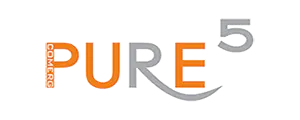How Does Equipment Financing Work?
Compare Business Loans
Small business owners are aware of how crucial it is to promptly and affordably acquire, upgrade, or replace the equipment required to carry out their daily responsibilities. Equipment finance can be an excellent way to keep your business running smoothly or even grow to meet the rising demand. Buying equipment outright can significantly strain your cash flow.
We’ll give you a general overview of how equipment financing operates, the rates and terms you may anticipate in the current market, the prerequisites for these loans, and how and where you can apply for one.
How does financing for equipment work?
A loan taken out to buy business-related equipment, like a vehicle, copy machine, or restaurant oven, is referred to as equipment finance. You must make regular payments that include interest and principal over a predetermined period of time when you take out an equipment loan.
Like an auto loan, the lender may require a lien on the equipment as security for the loan, serving as collateral for your debt. You own the equipment free and clear of any liens after the loan is fully repaid.
Additionally, the lender might place a lien on some of your other company assets or demand a personal guarantee. If you default on your loan, the lender may seize your business property and, if you provided a personal guarantee, even your personal property. To understand your risk, you must carefully analyze the loan details.
For instance, you’ll require a sizable quantity of equipment if you’re operating a restaurant, such as a commercial range, ovens, and refrigerator. Suppose the equipment’s total cost is $76,000: You apply for and are granted a loan for equipment worth $61,000, or 81% of the equipment’s cost.
This indicates that your out-of-pocket costs will be $16,000, and you can keep $61,000 in your financial reserves to cover all other startup costs like marketing and advertising, permits and licenses, and the cost of the facility.
Equipment Rental
Contrarily, equipment leasing entails paying the owner of the asset regular rent in exchange for using it for a predetermined amount of time. Unless you and the owner agree on renewal terms or a buyout, the equipment is returned to the owner at the conclusion of the lease term.
Leasing typically has less stringent requirements than financing does. The constant payments on leased equipment without the possibility of eventual outright ownership, however, may be a more expensive option if the equipment is essential to your organization.
Rates and conditions of equipment financing
Rates and terms will vary, as they do with any loans, based on your qualifications and the state of the market. The sample equipment financing rates and terms you might anticipate while looking for an equipment loan are listed below.
Loan value ratio
Up to 100%
- Fixed rate
- Refund Terms
- Fundraising speed
- Other requirements
- 2.00% to 20.00 D44
- 1 to 25 years
- Minimum 2 business days
- There may be minimum credit or business history requirements.
Up to 100%
- 2.00% to 20.00 D44
- 1 to 25 years
- Minimum 2 business days
- There may be minimum credit or business history requirements.
Equipment rental qualification
Lenders have different requirements for obtaining equipment loans. The following are common terms that lenders consider when making lending decisions. However, underwriting standards vary, so you should check before choosing a lender to ensure they meet the minimum requirements.
Your personal and business creditworthiness will be an important factor in obtaining equipment credit. If you are unsure of your current credit score, you can check your personal and business credit scores online. The higher your score, the more likely you are to be approved with better credit terms.
In addition to creditworthiness, lenders may require a business plan that describes your business and a detailed proposal for future growth. The basic goal is to provide potential lenders with a comprehensive view of your business.The number of years you have been in business and your company’s annual revenue are important factors to include in your business plan. Some lenders may have set thresholds for this. B. A minimum of two years of business activity with annual sales exceeding $250,000.
Lenders may also require a balance sheet or cash flow statement in addition to an income statement. These should identify the income going into the business and the expenses going out. These statements help lenders assess the financial strength of your business.
Lenders are also interested in your personal financial situation, so you may need to attach some personal documents as well. This could be items such as previous tax returns, bank statements, or a list of all personal debts.
Advantages and disadvantages of capital investment
Below is a quick rundown of the various factors to consider when considering financing your business.
Advantages of capital investment
- Helps build business trust
- Can be an affordable option, especially if you opt for a secured loan
- Get the equipment you need to grow your business
Cons of financing for equipment
- More costly than setting aside money to purchase the item outright
- Payments until the loan is repaid may cause problems for your company's cash flow.
- if you are unable to make the payments, it could severely harm your credit or perhaps force you out of business.
Where to acquire loans for equipment
Equipment financing is available through a variety of channels, from large, established banks in every state to more niche, smaller internet lenders.
Even though traditional bank lenders might have higher underwriting standards, they also provide better rates and conditions. They might be better suited to mature companies with a healthy cash flow and assets.
On the other hand, specialized internet lenders typically have laxer underwriting criteria. The rates and conditions, however, might not be as favorable as those offered by a conventional bank lender.
This kind of lender is better suited for new enterprises or those that fall short of the bank lenders’ minimal standards for assets and credit.
The ideal choice for you will, however, depend on where you are in your business’s development and whether you value better prices above a quicker, more flexible level of service.
It’s crucial to be aware that there are other ways to raise money for your company besides an equipment loan. You might also take into account using a business credit card, invoice factoring, merchant cash advances, or angel financing if you’re purchasing reasonably priced equipment. Regarding terms, turnaround time, and certification requirements, each has advantages and disadvantages.



